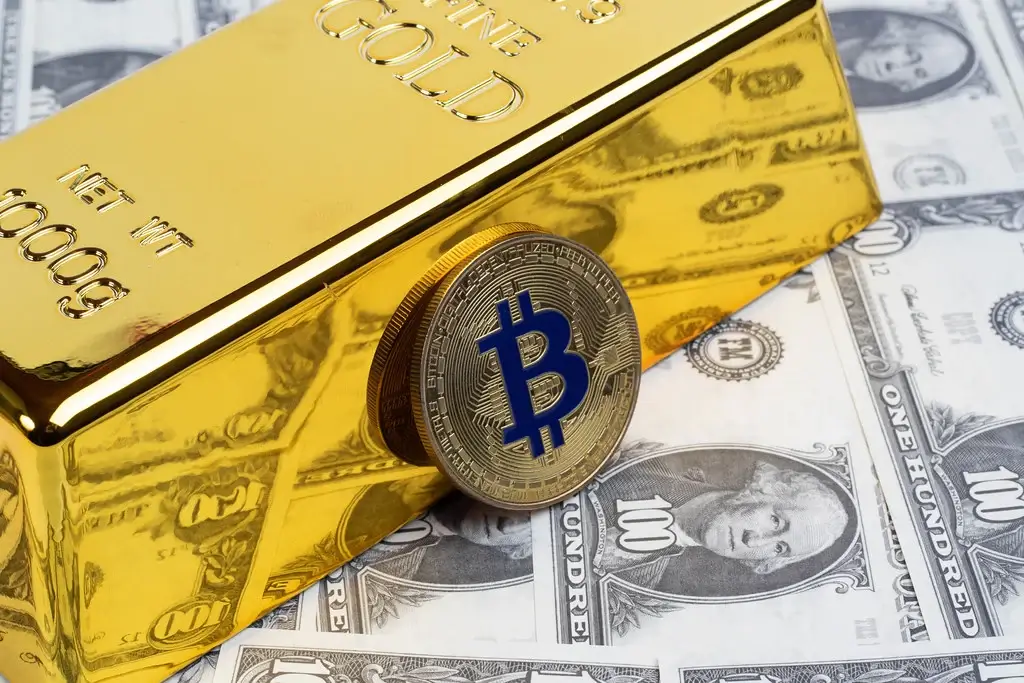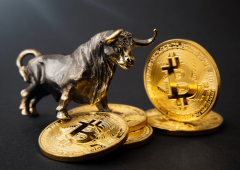Gold Surpasses $2,500 as Bitcoin Falls Behind: Analyst Weighs In
19.08.2024 8:00 2 min. read Alexander Stefanov
Last Friday, gold hit a record high, exceeding $2,500 per ounce, while Bitcoin struggled to keep pace. This has led to a debate within the financial community about the fundamental differences between the two assets.
Kashyap Sriram, an experienced trader and analyst, shared his views in response to a post by Lawrence McDonald, a best-selling author. McDonald questioned Bitcoin’s effectiveness as a store of value compared to gold.
Sriram stated, “Bitcoin’s prime era is over, while gold’s is just starting. Libertarian crypto investors are missing this shift.”
He explained that Bitcoin, designed by Satoshi Nakamoto, mimics gold, using “mining” as a term for its proof-of-work system. However, if gold mining ceased, gold would retain its value, whereas Bitcoin would be worthless without its miners. Bitcoin miners keep the network running by adding new blocks to the blockchain; without them, the system collapses.
Furthermore, Sriram criticized the decentralization of Bitcoin mining, pointing out that eleven mining pools control almost the entire network, making it vulnerable. Despite Bitcoin’s large market cap, its mining infrastructure is comparatively small and concentrated.
A study highlighted that five of these mining pools might be under one company’s control, raising concerns about centralization. Comparing historical performance, McDonald noted gold’s maximum drawdown was 21%, whereas Bitcoin’s was much higher at 82%.
Investors now face a choice between Bitcoin and gold as hedges against inflation, with cryptocurrencies presenting higher volatility compared to the more stable industrial demand for gold.
-
1
Elon Musk Unveils His Own ‘America Party,’ Signals Pro-Bitcoin Political Shift
07.07.2025 11:40 2 min. read -
2
Bitcoin Blasts Past $121,000 as Institutions Fuel Rally—Will Altcoins Follow?
14.07.2025 8:15 2 min. read -
3
Bitcoin: What to Expect After Hitting a New All-time High
10.07.2025 14:00 2 min. read -
4
Peter Brandt Issues Cautious Bitcoin Warning Despite Bullish Positioning
10.07.2025 20:00 2 min. read -
5
Vanguard Now Owns 8% of Michael Saylor’s Strategy, Despite Calling BTC ‘Worthless’
15.07.2025 17:09 2 min. read
Global Money Flow Rising: Bitcoin Price Mirrors Every Move
Bitcoin is once again mirroring global liquidity trends—and that could have major implications in the days ahead.
What is The Market Mood Right Now? A Look at Crypto Sentiment And Signals
The crypto market is showing signs of cautious optimism. While prices remain elevated, sentiment indicators and trading activity suggest investors are stepping back to reassess risks rather than diving in further.
What Price Bitcoin Could Reach If ETF Demand Grows, According to Citi
Citigroup analysts say the key to Bitcoin’s future isn’t mining cycles or halving math—it’s ETF inflows.
Is Bitcoin’s Summer Slowdown a Buying Opportunity?
Bitcoin may be entering a typical summer correction phase, according to a July 25 report by crypto financial services firm Matrixport.
-
1
Elon Musk Unveils His Own ‘America Party,’ Signals Pro-Bitcoin Political Shift
07.07.2025 11:40 2 min. read -
2
Bitcoin Blasts Past $121,000 as Institutions Fuel Rally—Will Altcoins Follow?
14.07.2025 8:15 2 min. read -
3
Bitcoin: What to Expect After Hitting a New All-time High
10.07.2025 14:00 2 min. read -
4
Peter Brandt Issues Cautious Bitcoin Warning Despite Bullish Positioning
10.07.2025 20:00 2 min. read -
5
Vanguard Now Owns 8% of Michael Saylor’s Strategy, Despite Calling BTC ‘Worthless’
15.07.2025 17:09 2 min. read


